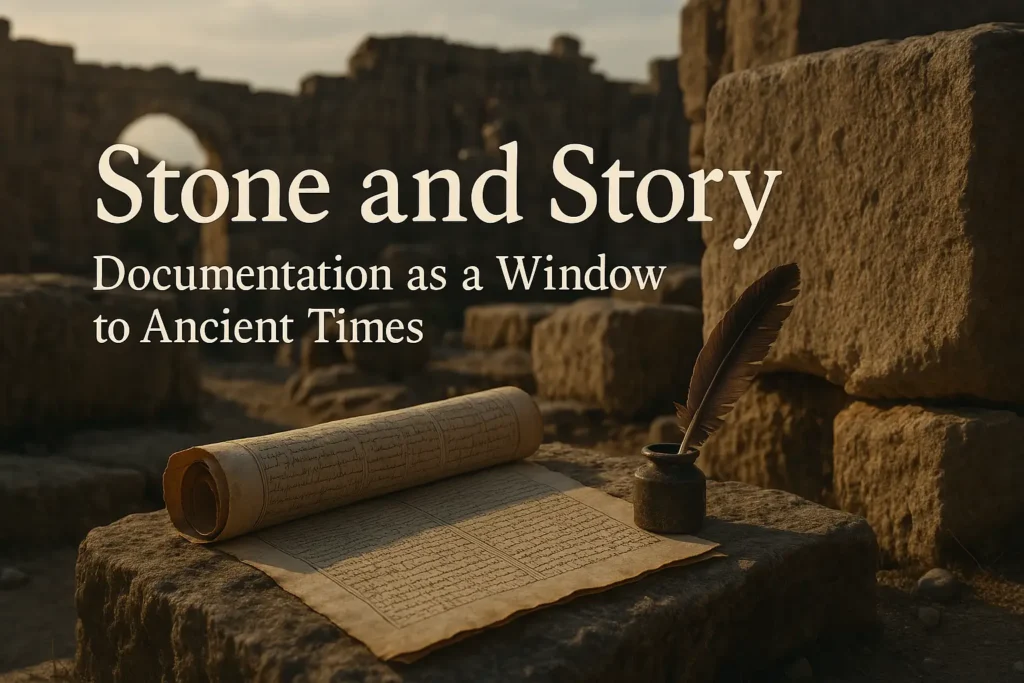Throughout history, documentation—the deliberate act of capturing and preserving human knowledge, memory, and experience—has stood as one of civilization’s most profound achievements. It has been far more than a simple record-keeping exercise; it has been a mechanism for survival, legacy, identity, and power. From the earliest cave paintings to the chiseling of royal decrees into stone, documentation has shaped how societies communicated across time and space, bridging generations, empires, and belief systems.

Long before the invention of paper, printing presses, or the internet, ancient peoples developed sophisticated ways of inscribing their realities onto enduring materials—especially stone. These early records often chronicled legal codes, conquests, spiritual beliefs, cosmologies, and mythologies. They were not only meant for their contemporaries but were often created with future generations in mind—an attempt to speak across centuries, to bear witness, to instruct, to legitimize, and to remember.
This timeless urge to document reflects a deeply human impulse: the desire to be understood, to be remembered, and to leave something meaningful behind. Stone inscriptions, in particular, represent one of the earliest—and most durable—forms of what we now call “knowledge management.” Despite their primitive tools, ancient scribes and artisans demonstrated a remarkable awareness of the strategic importance of knowledge capture, ensuring that their messages could withstand time, weather, and political change.
Today, as we debate cloud storage, metadata, taxonomy, and digital repositories, we would do well to remember that our modern KM tools are the latest chapter in a much older story—one that began not in servers or spreadsheets, but in rock faces, temple walls, and sacred sites. These early records continue to inform, inspire, and humble us—reminding us that documentation, when done with care and intention, can truly outlast civilizations.
The Legacy of Ancient Civilizations
Ancient empires such as Persia, Egypt, Babylon, Greece, and Rome extensively utilized stone inscriptions (known as stelae or tablets) to record significant events, royal decrees, legal codes, and even epic tales. These records were not merely informational; they served political and cultural purposes—affirming authority, legitimacy, and collective memory.
In ancient Persia, for instance, inscriptions carved into cliffs, palaces, and temples communicated both the values of the empire and its rulers’ achievements. Such inscriptions were critical not only for administration but also for transferring knowledge across generations.
Stone Inscriptions as a Form of Knowledge Management
One of the most fascinating aspects of early documentation was its method: carving into stone. Despite the effort and skill required, this technique ensured longevity and durability. Using tools like chisels and hammers, artisans engraved complex texts and images that remain legible thousands of years later.
These inscriptions covered a wide range of content—legal codes (e.g., the Code of Hammurabi), religious beliefs, royal decrees, and literary works like the Epic of Gilgamesh. They allow us today to “listen” to the voices of ancient societies, providing us with unfiltered access to their cultures, conflicts, and values.
In modern terms, these inscriptions can be viewed as a primitive but powerful form of knowledge management. They captured and disseminated vital information, shaped cultural norms, and helped ensure governance continuity—principles that are still relevant in today’s organizations.
The Bisotun Inscription: A Persian Masterpiece
Among the most extraordinary ancient records is the Bisotun Inscription (also spelled Behistun), located near Kermanshah in western Iran. Recognized as the largest stone inscription in the world, it was created around 520 BCE during the reign of Darius the Great of the Achaemenid Empire.
This monumental work, carved 80 meters up a limestone cliff, is trilingual—written in Old Persian, Elamite, and Akkadian—using cuneiform script. It has been crucial for linguists in deciphering Old Persian, much like the Rosetta Stone was for Egyptian hieroglyphs.
In 2006, the site was inscribed on the UNESCO World Heritage List, underlining its global cultural and historical significance. The Bisotun complex contains archaeological remains from the Paleolithic era to the Safavid dynasty, but the fame of the site largely stems from Darius’s monumental inscription and relief.
What Is Documented on the Bisotun Inscription?
The inscription includes over 1,200 lines and captures various aspects of Darius’s reign, including:
- His own introduction and lineage
- The restoration of the Achaemenid dynasty
- The death of Cambyses and the rise of a usurper (Gaumāta)
- Accounts of rebellions and how they were suppressed
- Nineteen battles fought and won by Darius
- Praise of Ahura Mazda (the Zoroastrian god) and gratitude for divine assistance
- A moral lesson about honesty and a warning against falsehood
- Advice to future rulers and readers of the inscription
From Ancient Stones to Modern Systems
As a knowledge management consultant and trainer working with a wide range of organizations across industries, I regularly emphasize that documentation is not a bureaucratic chore—it is a strategic imperative. Without structured knowledge capture, we risk repeating mistakes, reinventing solutions, and losing valuable insights when people retire or move on. Time and again, I have witnessed organizations struggle with knowledge loss, not because they lacked tools or technology, but because they lacked a culture that values documentation.
Interestingly, many senior professionals—those with decades of experience—often share a similar sentiment: “We used to do this better.” They recall a time when knowledge sharing and documentation were naturally embedded into daily work, supported by mentorship, storytelling, and a shared sense of organizational identity. Over time, however, these practices eroded, replaced by reactive behavior and short-term thinking. The cultural shift away from documentation is a phenomenon that deserves deeper diagnosis—and a renewed response.
What continues to inspire me deeply is the way our ancestors approached this same challenge. They didn’t have servers, cloud storage, or collaborative platforms—but they recognized the gravity of preserving knowledge. And they rose to that challenge with extraordinary creativity and craftsmanship, embedding their records into stone. The Bisotun Inscription, for example, is not just a historical monument; it is an ancient knowledge repository, designed with clarity, purpose, and permanence.
In today’s KM environment, we often look forward—toward new technologies, ISO standards, or theoretical frameworks—to improve our practices. But perhaps we should also take time to look backward. There is wisdom in ancient ways. The enduring impact of stone inscriptions tells us that the act of documentation is not just technical; it is cultural and even spiritual. Our ancestors understood that to preserve knowledge is to honor it—and to share it is to serve the future.
So, instead of asking only what tools should we use, we might also ask: what values should guide our knowledge practices? Shouldn’t we, like the ancients, strive to document not just facts and processes, but meaning, context, and intent? The answer, I believe, is yes.
Because sometimes, the most powerful case for knowledge documentation doesn’t come from a white paper or case study—it comes from the side of a mountain, etched in stone by hands that understood the future would be watching.
“He who does not learn from the passage of time will not be taught by any teacher.”
— Persian Proverb
Subscribe to receive notifications for free webinars on Knowledge Management.

